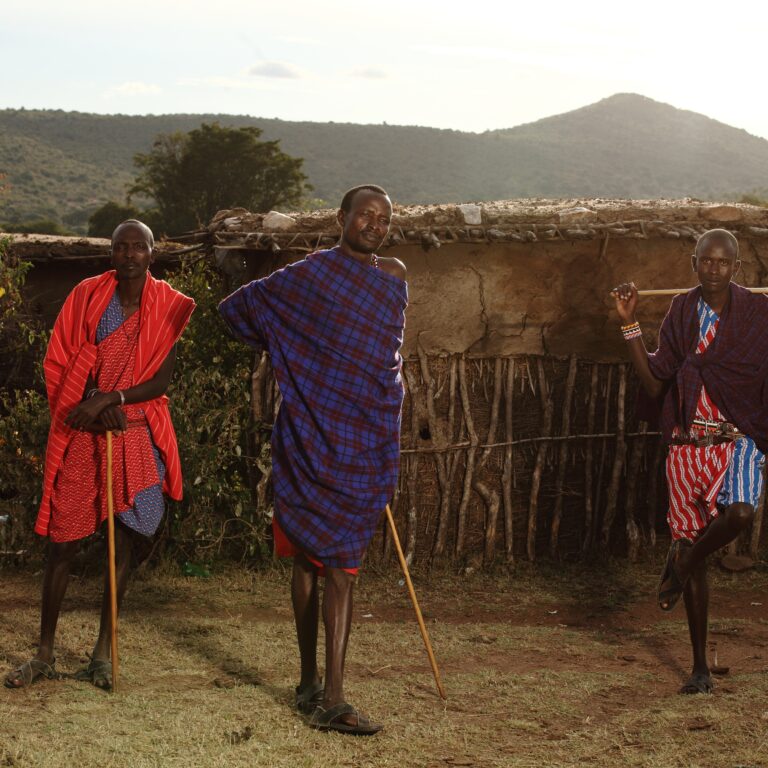Amazing Facts about the Blue Wildebeest
The blue wildebeest, also known as the common gnu or brindled gnu, is a remarkable and iconic species native to the grasslands and open woodlands of southern and eastern Africa. These large herbivores are known for their distinctive appearance and incredible migrations. In this article, we’ll delve into 10 fascinating facts about the blue wildebeest, shedding light on their behavior, physiology, and ecological significance. Book Your African Vacations now.
1. Appearance and Behavior
The blue gnu (Connochaetes taurinus). It characterized by its robust build and unique appearance. With a dark, brindled coat, a beard of hair hanging from the throat, and curved, pointed horns, these creatures are easily recognizable. Their behavior is equally distinctive, often forming large migratory herds for both feeding and protection against predators.
2. Migratory Marvels: Interesting facts about the blue wildebeest
One of the most beautiful aspects of the blue wildebeest is its migration pattern. Known for their extensive seasonal journeys in search of food and water. The migrations cover vast distances, and the wildebeest can travel hundreds of miles, showcasing an incredible instinct for survival.
3. Social Structure: Interesting Facts About Wildebeest
Blue wildebeests are highly social animals and typically form large herds, especially during migration. These herds can number in the thousands, providing protection against predators such as lions and hyenas. Within the herd, social bonds are formed, and the wildebeest display complex interactions and communication.
4. Ecological Engineers
Blue wildebeests play a crucial role as ecological engineers. Their grazing habits help maintain the grasslands by preventing vegetation from becoming overgrown. This, in turn, promotes biodiversity by creating a mosaic of different plant species and habitats, benefiting numerous other animals in the ecosystem.
5. Calving Season
Blue wildebeests exhibit a synchronized calving season, often giving birth within a short time frame during the rainy season when food is abundant. This strategy is believed to improve the chances of survival for the calves, as there is safety in numbers, and predators are overwhelmed by the sheer size of the newborn population.
6. Speed and Agility
Despite their robust appearance, blue wildebeests are surprisingly agile and can reach speeds of up to 50 miles per hour. This speed and agility serve as effective defenses against predators, allowing them to evade capture and ensuring the survival of the herd.
7. Survival Instincts
Blue wildebeests have developed keen survival instincts honed by millennia of evolution. They are wary of predators and are known for their ability to detect danger quickly. 10 Incredible Wildebeest Facts. This heightened sense of awareness, combined with their speed and group dynamics, contributes to their impressive survival rate in the wild.
8. Nutrient Cycling
The migratory habits of blue wildebeests also contribute to nutrient cycling in ecosystems. As they move across landscapes, they deposit dung, which acts as a natural fertilizer. This helps enhance soil fertility and promotes the growth of vegetation, creating a cyclical relationship between the wildebeests and their environment.
9. Cultural Significance
Blue wildebeests hold cultural significance for many African communities. They are featured in folklore, traditional dances, and ceremonies, often symbolizing resilience, strength, and the cyclical nature of life. 10 Fascinating Facts About the Blue Wildebeest. The wildebeest migration is also a major tourist attraction, drawing visitors from around the world to witness this awe-inspiring spectacle.
10. Conservation Challenges
While the blue wildebeest population is currently stable, they face ongoing conservation challenges. Habitat loss due to human activities, poaching, and climate change are threats that need to be addressed to ensure the continued survival of this species. Conservation efforts are crucial to maintaining the balance of ecosystems and preserving the cultural and ecological importance of the blue wildebeest.
Frequently Asked Questions (FAQs): Ten Fun Facts about Wildebeest
There are around 1.5 million living in the Serengeti alone! They are widespread in many areas of Africa.
Their main defence from predators is living in a group. Wildebeest stick together and move in herds to be more safe.
They can run up to 40 mph, which is pretty fast! Although, unfortunately for them, not as fast as lions or cheetahs.
Why are they called “blue” wildebeests?
The name “blue” wildebeest refers to the silvery-blue sheen of their coat, especially in certain lighting conditions.
Do blue wildebeests only migrate for food?
While food is a primary motivator for migration, water availability also plays a significant role. Wildebeests follow the period of rains to ensure access to both food and water.
Are blue wildebeests a threatened species?
Currently, blue wildebeests are classified as of “Least Concern” on the IUCN Red List, indicating a stable population. However, ongoing conservation efforts are necessary to address potential threats.
How long do blue wildebeests live?
In the wild, their lifespan is typically around 20 years, while in captivity, they may live longer.
What is the significance of the wildebeest migration?
The migration is significant for ecosystem health, as it influences nutrient cycling, vegetation dynamics, and provides a spectacle that attracts tourists, giving to local economies.
In conclusion: 10 Fascinating Facts About the Blue Wildebeest
The blue gnu is a captivating species that not only indicate the wonders of the animal kingdom but also plays a vital role in ensure the ecological balance of the African nature. Understanding and appreciating these fascinating creatures is key to ensure their continued existence and the preservation of the ecosystems they inhabit.








